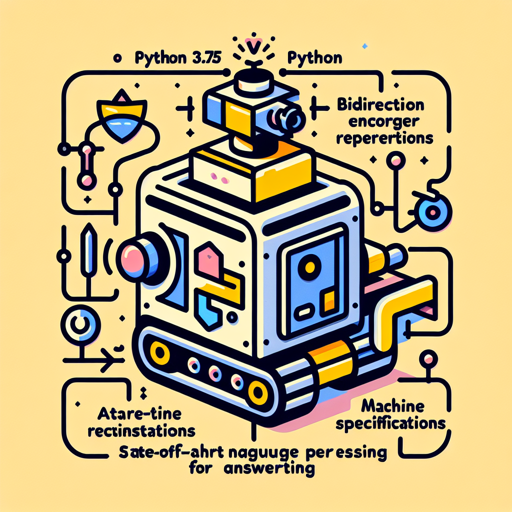In this guide, we’re going to delve into the wonderful world of machine learning, specifically focusing on how to fine-tune the BERT model for question answering tasks. This intriguing process lets us harness the powerful capabilities of BERT to answer questions based on a provided context, much like having a knowledgeable friend at your fingertips!
What is BERT?
BERT, or Bidirectional Encoder Representations from Transformers, is a state-of-the-art natural language processing (NLP) model that understands the context of words in a sentence as well as their relationships to each other. This means that when you ask a question, BERT is well-equipped to find the answer within a given text, similar to how you might navigate through a library to find the right book with the information you need.
Prerequisites
- Python: version 3.7.5
- Machine specifications (preferably):
- CPU: Intel(R) Core(TM) i7-6800K CPU @ 3.40GHz
- Memory: 32 GiB
- GPUs: 2 GeForce GTX 1070, each with 8GiB memory
- GPU Driver: 418.87.01, CUDA: 10.1
Getting Started
To fine-tune the BERT model on the SQuAD dataset, you’ll primarily need to follow the steps below:
1. Install Required Libraries
Be sure to start by installing the necessary libraries from Hugging Face:
pip install transformers2. Set Up the Environment
Create a directory for your dataset and download the SQuAD dataset:
mkdir -p data
wget -O data/train-v1.1.json https://rajpurkar.github.io/SQuAD-explorer/dataset/train-v1.1.json
wget -O data/dev-v1.1.json https://rajpurkar.github.io/SQuAD-explorer/dataset/dev-v1.1.json3. Run the Fine-Tuning Script
Execute the script below for training:
python run_squad.py \
--model_type bert \
--model_name_or_path bert-base-uncased \
--do_train \
--do_eval \
--do_lower_case \
--train_file data/train-v1.1.json \
--predict_file data/dev-v1.1.json \
--per_gpu_train_batch_size 12 \
--per_gpu_eval_batch_size=16 \
--learning_rate 3e-5 \
--num_train_epochs 2.0 \
--max_seq_length 320 \
--doc_stride 128 \
--data_dir data \
--output_dir data/bert-base-uncased-squad-v1This process may take around 2 hours to finish.
Understanding the Process Through Analogy
Imagine teaching a child how to answer questions based on a storybook. At first, the child doesn’t know much about the story. So, you read the book to them several times (this is similar to training BERT on the SQuAD dataset). With repeated exposure, they learn the sentences and gain context on how to pick important details when you ask them questions about the story. Finally, they become adept at answering all related questions based on the context of the story they’ve internalized. Just like that, BERT learns to understand the context and answer questions accurately based on the data it processes!
Results
After fine-tuning, you can expect the following performance metrics:
- Exact Match (EM): 80.9%
- F1 Score: 88.2%
Troubleshooting
If you encounter any issues during the fine-tuning, consider the following troubleshooting tips:
- Ensure that all your imports are correctly implemented.
- Check your GPU drivers and compatibility with CUDA.
- Make sure the dataset paths are accurately set in your script.
- If running out of memory, consider reducing the batch size.
- For more insights, updates, or to collaborate on AI development projects, stay connected with fxis.ai.
At fxis.ai, we believe that such advancements are crucial for the future of AI, as they enable more comprehensive and effective solutions. Our team is continually exploring new methodologies to push the envelope in artificial intelligence, ensuring that our clients benefit from the latest technological innovations.

